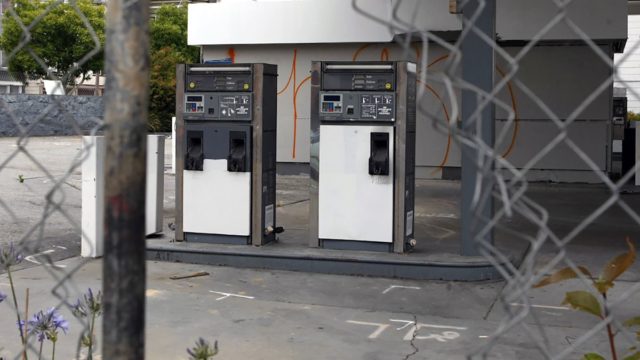Food budgets blowing out as grocery prices soar – best evidenced by lettuce going for $12 a pop – eye-popping prices at the pumps and product shortages are all signs of the looming apocalypse. Right?
Well, actually no, they’re not. They’re all signs of the inflationary pressures brought about by a combination of factors including exceptional weather events – flooding, geopolitical tensions, and to some extent measures taken to prop up the economy during the heights of the Covid-19 pandemic.
The reasons are many but there is one area that seems to be the underlying cause for several of the measures of inflation, and that is fuel.
Fuel prices – petrol and diesel – have ballooned in the past half year due to the skyrocketing price of crude oil and that is in turn due to two reasons – chronic underinvestment in the oil and gas sector, and Russia’s invasion of Ukraine.
The oil and gas sector has been plagued by years of underinvestment. Even before the Covid-19 pandemic, the sector was already finding it challenging to secure funding for new projects or expanding existing ones.
This was due to the move towards net zero, spearheaded by Europe, that had investment funds and banks begin a pullback from putting money into what was increasingly seen as a bad investment.
With the onset of Covid-19 and the global slowdown that it caused, there was talk that the clear skies – something not seen over some cities for decades – presented an opportunity to accelerate the energy transition.
On the road to inflation
Sadly, the measures put in place to stimulate economies and possibly the pressures caused by weeks and months of lockdowns led to a faster than estimated recovery that really hit its stride in 2021.
And that was a problem.
The recovery taxed the ability of renewables to power it (in Europe especially) and when countries reached for oil and gas to meet the gap, they found that years of underinvestment had left their inventories wanting and suppliers unable to keep up.
Prices soared as a result of the high demand and suddenly, those on the fence or just marginally negative towards the sector were finding it palatable again.
At this stage, we might have endured a couple of years of somewhat elevated energy prices, which would have put some inflationary pressure, until enough oil and gas supply along greater renewable energy capacity kicked in.
Then Russia invaded Ukraine and the resulting sanctions imposed on Russia, bans and the tit-for-tat reductions in gas supply have sent prices of both oil and gas soaring.
And when crude oil prices rise, you can count on petrol and diesel prices rising as well – probably with greater certainty than the sun rising, which for a country as reliant on trucking for logistics as Australia is just shy of disastrous.
Speaking to Stockhead, Head of the Arndt-Corden Department of Economics, Crawford School of Public Policy at the Australian National University Professor Paul Burke said high oil prices flow through to higher prices at the pump.
“This is a hit to consumer budgets and firm costs and would feed into inflationary pressures,” he added.
Another example comes from potato farmers, who warned that unless supermarkets add 20 cents per kilo to the shelf price of their produce, departures from the industry will be inevitable.
Inflationary pressures have also led central banks – including our very own Reserve Bank – to increase their cash rates in a bid to nip inflation in the bud, but that has the very much disliked impact of increasing mortgage repayments.
Be prepared for more fuel cost pain
This sorry state of affairs could continue as long as the Russian invasion of Ukraine continues and for some time even after it concludes.
But in the event that Russia cuts off gas supplies to Europe, an event that the G7 group of nations has rather pointedly NOT ruled out, things are likely to get worse.
“If Russia imposed a sector-wide ban on exports to Europe, then we should expect to see the gas and oil price accelerate and go up because of the tightening of supplies,” VP Capital co-founder and portfolio manager John So told Stockhead.
“Europe would basically enter an energy crisis, especially on the gas front, there wouldn’t be enough supplies coming out of the LNG producers to be able to fill the void because all of this has already been contracted to various customers in Asia and so forth.”
“On the oil front, we are going to see the same issue as well.”
He added it was harder to see how things will play out in the long-term as it was dependant on whether the West and Russia could eventually mend ties and cut a deal on energy supplies.
For Australia, the impacts are manifold.
“Consumers in Australia and around the world are in a tough spot due to rising costs and inflation, and if we see the energy crisis steepen further than this inflation is going to be even harder to control,” So added.
“Obvious items like petrol and gasoline are going to become very expensive for the consumer, but it’s not just the direct impacts of these type of commodity price driven consumer items, but also the flow-through effects from services such as logistics which then has an impact on the cost of everything – from delivery electronic equipment, to transporting fruits and vegetables – all these things will face a price shock.”
The higher prices for goods could also lead to companies shutting down due to their inability to sustain operations, which will cause job losses.
Notable examples are the closures of several construction businesses, most of which have cited unsustainable costs as the reason.
A shortage of new homes being built has also put pressure on the rental market with CoreLogic’s March Quarterly Rental Review showing its national rental index had increased 2.6% for the quarter and 8.9% over the year — the fastest annual growth since 2008.
“The ultimate impact is going to be that consumer spending will slow down and the risk of recession is going to increase significantly,” So explained.
None of it is good news and it is hard to see the silver lining.
But amazingly, there it is.
Going high in order to get low
As counterintuitive as it might sound, higher prices will also lead to lower prices in the future with Professor Burke noting that they will provide an incentive to increase energy supplies while reducing fossil fuel use.
“These would help prices come down again, although the adjustments take time,” he added.
“Commodity prices tend to cycle. High oil and gas prices are the genesis for lower oil and gas prices in the future, as they incentivise new supply to open up and consumers to reduce their reliance on oil and gas.”
High fuel prices also make electric vehicles look more attractive – though they aren’t immune from inflationary pressure, making it increasingly likely that your next vehicle will feature batteries rather than a petrol tank.
The logistics industry is already well aware of this and interest has been growing in both electric vehicles and their hydrogen fuel cell powered counterparts, which offer significant advantages.
Once prices come down – however unlikely that might seem at this time – we can also expect to see some moderation in pricing to more palatable levels, though don’t expect to see a return to the low prices of yesterday.
You might be interested in











